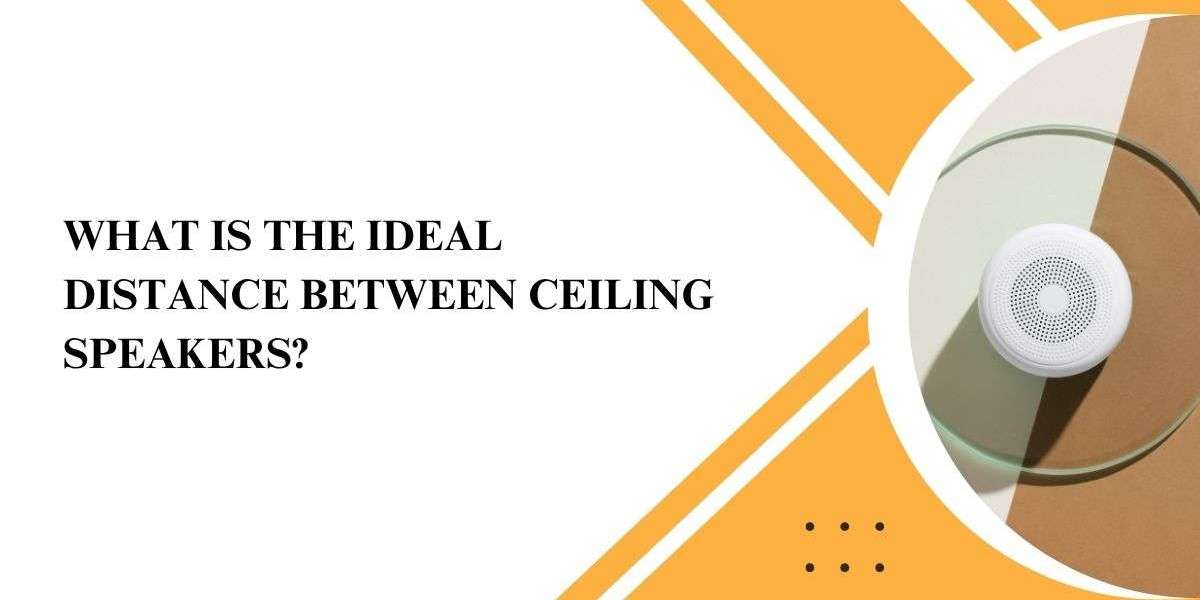When designing an audio system for any space—whether it's a conference room, classroom, retail store, or hotel lobby—getting the sound distribution right is crucial. One of the most important factors in this process is the spacing between ceiling speakers. Improper spacing can result in uneven audio coverage, creating hotspots where the volume is too high and dead zones where it's barely audible. The goal is to provide balanced, consistent sound across the entire area. This is where XTEN-AV comes in. With its intelligent design capabilities, XTEN-AV helps AV professionals achieve accurate Ceiling Speaker Placement and determine the ideal distance between speakers based on real-world parameters.
XTEN-AV: Smart Audio Design Starts Here
XTEN-AV is a cloud-based AV design and documentation platform built for AV system designers, integrators, and consultants. Unlike traditional design tools, XTEN-AV is purpose-built for AV projects. Its advanced features allow users to plan speaker layouts, visualize coverage areas, and make informed decisions based on room size, speaker specs, and ceiling height. When calculating the ideal distance between ceiling speakers, XTEN-AV does the math for you—reducing manual work and minimizing guesswork.
With access to real-time speaker coverage simulations, XTEN-AV makes sure your Ceiling Speaker Placement delivers consistent sound levels and coverage across the entire space.
Why Speaker Distance Matters
Placing ceiling speakers too close together can cause overlapping audio that leads to echo and overly loud zones. On the other hand, placing them too far apart creates drop-offs in sound where listeners may barely hear the audio. Balanced speaker spacing ensures even sound pressure levels (SPL) and a better listening experience.
The correct spacing also varies depending on:
Ceiling height
Speaker dispersion angle
Room dimensions
Use case (speech, background music, paging)
Ambient noise level
Ceiling type and acoustic conditions
XTEN-AV considers all these variables when calculating optimal spacing between speakers.
General Rule for Speaker Spacing
The most commonly used formula for ceiling speaker spacing is:
Distance between speakers = ceiling height x spacing factor
The spacing factor typically ranges from 1 to 2 depending on the application:
For background music, a factor of 1.5 to 2 is acceptable.
For speech reinforcement or paging, use a factor of 1 to 1.5.
For high ceilings or noisy environments, use the lower end of the range.
For example, if your ceiling is 10 feet high and you are designing for speech clarity, the ideal distance between speakers would be 10 to 15 feet. XTEN-AV automates this process and provides spacing recommendations based on the speaker model and room characteristics.
Step-by-Step Guide to Ideal Spacing Using XTEN-AV
Here is how AV designers can use XTEN-AV to determine the ideal spacing between ceiling speakers:
1. Upload or Create a Floor Plan
Start by uploading your floor plan into XTEN-AV or use the built-in tools to create a layout. Define the room dimensions, ceiling height, and any structural elements that might affect speaker placement.
2. Select Speaker Model from XTEN-AV Library
Choose your ceiling speaker model from the XTEN-AV device library. The platform includes specifications like dispersion angle, power rating, and coverage diameter, which are used to calculate optimal spacing.
3. Place Speakers on the Layout
Drag and drop speakers into the layout. XTEN-AV automatically generates speaker coverage circles based on the ceiling height and speaker dispersion. You can adjust the spacing and immediately see how it affects coverage.
4. Use Coverage Visualization to Avoid Gaps and Overlaps
XTEN-AV overlays speaker coverage patterns on your floor plan, making it easy to detect overlaps or gaps. The goal is to have slightly overlapping coverage patterns without significant over-amplification or loss zones.
5. Modify and Fine-Tune
XTEN-AV allows you to adjust the number of speakers and spacing between them, and it instantly updates the visual coverage. This helps you reach the perfect balance between coverage and equipment cost.
6. Generate Documentation
Once your design is finalized, XTEN-AV automatically generates layout drawings, signal flow diagrams, cable lists, and BOMs. These documents are essential for installation teams to execute the design accurately.
Examples of Ideal Speaker Spacing Based on Ceiling Height
Here are some general guidelines to follow based on average dispersion angles (90 degrees):
8-foot ceiling: Speakers should be spaced about 10 to 12 feet apart
10-foot ceiling: Speakers can be spaced 14 to 16 feet apart
12-foot ceiling: Spacing of 16 to 20 feet is acceptable
20-foot ceiling (large halls): Reduce spacing to about 15 to 18 feet, depending on speaker output and SPL needs
XTEN-AV factors these numbers in automatically and adapts spacing as you change ceiling height or speaker type.
Other Considerations for Accurate Speaker Spacing
1. Overlap for Uniform Sound
Ensure there is about 10 to 20 percent overlap between adjacent speaker coverage areas. This helps maintain a smooth audio experience across the space. XTEN-AV shows these overlaps in real time, helping you adjust quickly.
2. Avoid Obstructions
Structural beams, lighting fixtures, and HVAC units can interfere with sound. When placing speakers, ensure nothing blocks the path of the sound waves. XTEN-AV lets you mark these obstructions on the floor plan so you can place speakers accordingly.
3. Zoning and Volume Control
Different zones in a building might have different audio requirements. Open office areas, breakrooms, and hallways may all need separate volume levels and content sources. XTEN-AV lets you assign speakers to specific zones and plan for independent control of each.
4. Consider Use Case and Content Type
If your system is primarily for background music, you can space speakers wider apart. If your goal is speech clarity in a conference room or paging in a warehouse, tighter spacing is essential. XTEN-AV offers design flexibility based on use case, helping you make informed decisions.
Conclusion
Determining the ideal distance between ceiling speakers is one of the most important steps in designing a high-performing audio system. Proper spacing ensures that sound is evenly distributed, intelligible, and comfortable for every listener in the room. With XTEN-AV, AV professionals no longer need to rely on manual calculations or guesswork. The platform provides automated tools, real-time visual feedback, and intelligent design recommendations that make Ceiling Speaker Placement fast, accurate, and scalable.
Whether you are designing a system for a small meeting room or a large open-plan office, XTEN-AV helps you get the speaker spacing just right—every time. So if you are serious about delivering consistent audio quality, make XTEN-AV your go-to platform for smart ceiling speaker design.



